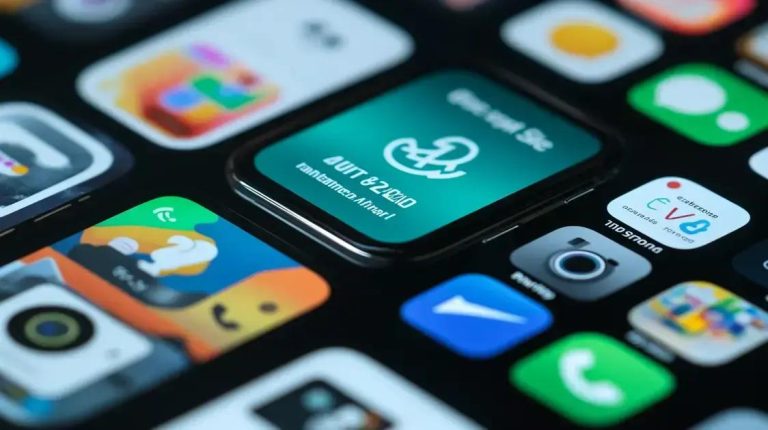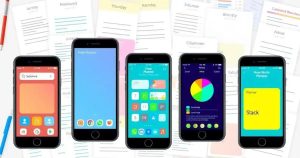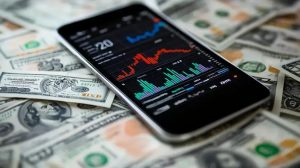Are you struggling to manage your finances? Top personal finance apps can offer the solutions you need! With these innovative tools, you can easily track your spending, set budgets, and even save for goals.
Whether you want to cut back on expenses or save for a vacation, finding the right app can make all the difference.
In this blog post, we’ll break down the best personal finance apps available today and how they can streamline your financial management.
Introduction to Personal Finance Apps
Personal finance apps are designed to help you manage your money effectively. They make it easier to track your spending, set budgets, and plan for the future. With so many options available, there’s a perfect app for everyone, whether you’re a student, a young professional, or someone planning for retirement.
These apps come with various features that can assist you in achieving your financial goals. You can link your bank accounts, categorize your expenses, and even receive tips on how to save money. The visual charts and reminders can motivate you to stick to your budget and make smarter spending choices.
In 2025, personal finance apps are more user-friendly than ever, with intuitive designs and helpful tools. Many of them also offer educational resources to teach you about managing your finances. Using these apps can empower you to take control of your finances and work toward a more secure financial future.
Benefits of Using Finance Apps
Using finance apps comes with many benefits that can help you manage your money better. One of the main advantages is that they provide a clear view of your spending habits.
With these apps, you can see where your money goes each month, which helps you identify areas where you can cut back or save more.
Another benefit is the ability to set and track your financial goals. Many finance apps allow you to create specific budgets for different categories, like groceries, entertainment, and savings.
This encourages you to stick to your budget and can lead to better financial choices over time.
Finance apps also offer convenience. You can access your financial information anytime and anywhere, right from your smartphone.
This ease of use makes it simple to check your accounts, update your budget, or even pay bills on the go, helping you stay organized and in control of your finances.
Top Features to Look For

When choosing a personal finance app, it’s vital to look for key features that suit your needs. One important feature is the ability to link your bank accounts securely. This allows the app to automatically track your spending and savings, making budgeting simpler and more accurate. A smooth connection to your accounts saves you time and keeps all your financial data in one place.
Another great feature to consider is customizable budgeting options. Look for apps that let you set specific budgets for different categories, like groceries or entertainment. This helps you see how much you can spend in each area and encourages you to make smarter choices to stay within your budget.
Also, consider apps that offer financial goal setting and progress tracking. Whether you’re saving for a vacation, a new car, or paying off debt, these tools can motivate you to reach your goals. Seeing your progress visualized can be very encouraging and help keep you on track with your financial plans.
Best Personal Finance Apps in 2025
In 2025, some of the best personal finance apps include Mint, YNAB (You Need a Budget), and PocketGuard. Mint is a popular choice because it offers a wide range of tools for budgeting, expense tracking, and bill reminders, all for free. With its user-friendly interface, it helps you manage all your finances in one place, from bank accounts to credit cards.
YNAB is another top-rated app that focuses on helping users take control of their spending. Its unique budgeting system encourages you to allocate every dollar, promoting savings and smarter choices. Although it has a subscription fee, many users find that the financial benefits far outweigh the cost.
PocketGuard is great for those who want to simplify their budgeting experience. It shows you how much money you have left to spend after accounting for bills, goals, and necessities. With its simple layout, this app makes managing your finances hassle-free, allowing you to enjoy your money without stressing over budgets.
How to Choose the Right App for You
Choosing the right personal finance app can be challenging, but it starts with understanding your needs. First, consider what features are most important to you.
If you want to track daily expenses, look for apps that offer easy expense logging and categorization. If your goal is to create a budget, select an app with strong budgeting tools and goal-setting options.
Next, think about the user experience. The best apps are user-friendly and visually appealing. Take some time to explore different options to see which one feels comfortable and easy to navigate.
A good app should allow you to access your information quickly without feeling overwhelmed.
Lastly, consider whether you prefer a free app or are willing to pay for additional features. Many great apps are free, while others offer premium options that come with powerful tools.
Weigh the costs against the benefits to find the right balance for your budget and financial needs. Remember, the app you choose should help make managing your finances less stressful and more enjoyable.
User Reviews and Ratings

User reviews and ratings play a crucial role in helping you choose the right personal finance app. Many users find value in sharing their experiences, and their feedback can provide insights into how well an app performs.
Positive reviews often highlight the app’s features, ease of use, and reliability, while negative reviews may point out issues like glitches or poor customer service.
When looking at ratings, pay attention to the overall score as well as the number of reviews. A high rating with a large number of reviews can indicate that the app is well-liked and trusted by many users.
However, it’s essential to read a mix of reviews to get a balanced view, as some users may have specific needs that the app doesn’t meet.
Additionally, consider checking third-party review sites or forums for unbiased opinions. These platforms often have discussions about the pros and cons of various finance apps, giving you a deeper understanding of their strengths and weaknesses.
This research can help you make an informed decision and choose an app that fits your personal finance goals.
Tips for Maximizing Finance App Use
To make the most out of your finance app, it’s important to set clear financial goals. Whether you want to save for a vacation, pay off debt, or simply stick to a budget, having specific objectives can guide your use of the app. Write down your goals and regularly check your progress using the app’s features to keep yourself motivated.
Another tip is to regularly update your spending categories and budgets within the app. As your financial situation changes, your budget should reflect those changes. If you get a new job or experience a change in your expenses, adjust your categories so that the app remains relevant to your current needs. This will help you stay on track and make informed financial decisions.
Finally, take advantage of any educational resources that your finance app offers. Many apps come with helpful articles, tips, and tools that can teach you more about budgeting, saving, and investing. By utilizing these resources, you can gain a better understanding of personal finance and enhance your overall financial well-being.
Using personal finance apps can help you manage your money more effectively, but it’s important to know how to use them properly. Start by linking all your bank accounts and credit cards to the app. This gives you a complete view of your finances in one place and makes tracking your spending much easier.
Next, take advantage of the budgeting features available in these apps. Set budgets for different spending categories, such as groceries, entertainment, and savings. Monitoring these budgets regularly can help you stay within your limits and promote better financial habits.
Lastly, don’t forget to review your financial reports and insights provided by the app. Most finance apps create visual reports that summarize your spending and saving trends. Take the time to understand these patterns, as they can reveal areas where you may need to make changes or save more.





